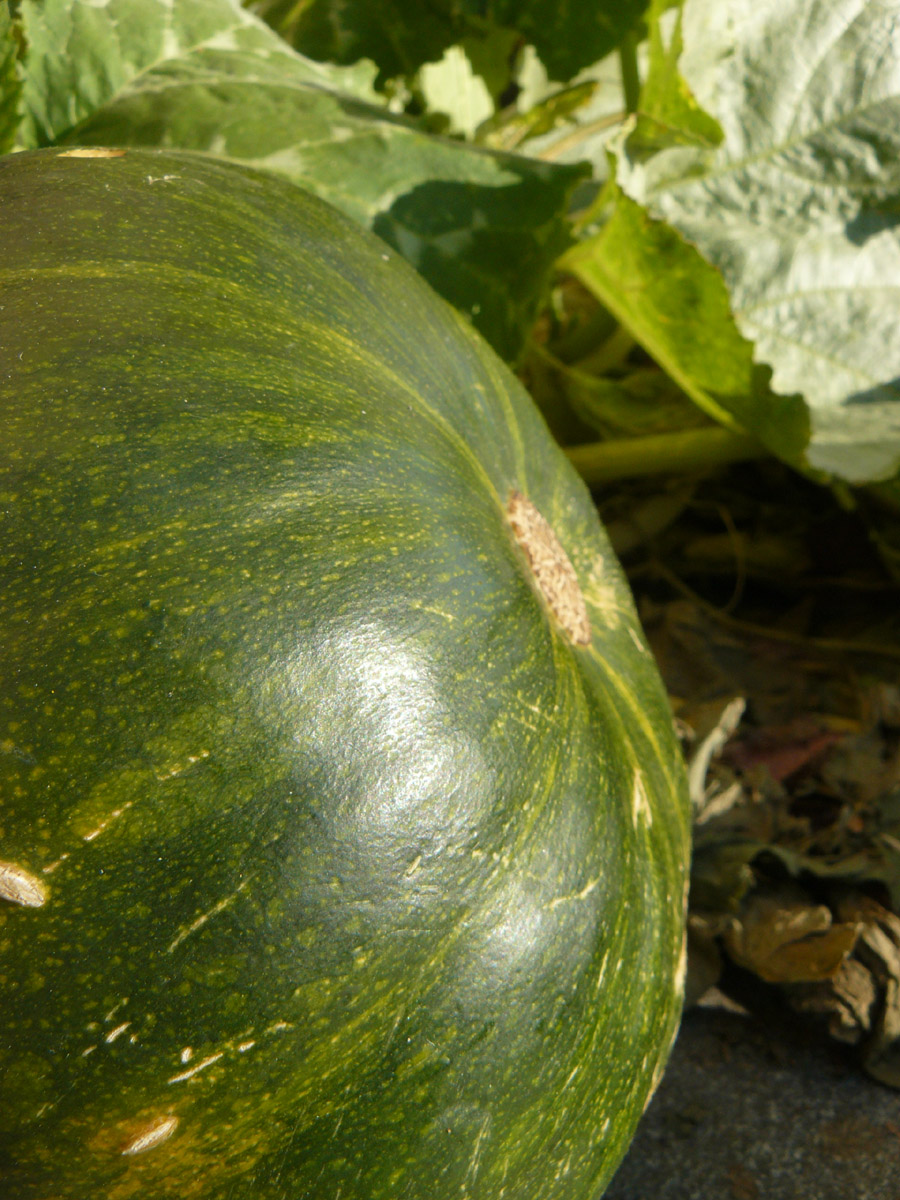 Location Taken: Washington DC
Location Taken: Washington DC
Time Taken: October 2008
It’s a squash!
Well, at least I think it is. The skin doesn’t look quite right for a melon, but this squash does look surprisingly similar to a watermelon at first glance, doesn’t it?
However, the leaf shape is solidly that of a squash, so squash it is!
Actually, there was another, easier way to figure this out. I took this photo in the Native Garden right outside the National Museum of the American Indian. If you’ve never encountered a Native Garden before, they are gardens set up to only contain plants native to the area (or at least the continent; some are less picky than others). They also often use crop plants as well as flowers, and plant them in the techniques used by the native. I have no idea if such things even exist in other countries, and they’re pretty rare even in the US, but I’ve bumped into a few. It helps if you like visiting historical places that focus on Native life a bit more.
Anyway, the thing is, squash is native to the Americas, while melons are not (they evolved in Africa and southwest Asia, according to Wikipedia). I think this squash is a Cucurbita maxima, but I wasn’t able to find an exact match of color and leaf, so I can’t be certain. It does look a lot like the Kabocha squash I like, though, with is one of the Cucurbita maxima varieties.
Admittedly, that does bring up the other issue of deciding what “Native” means. Kabocha is considered a Japanese squash variety. In other words, all kabocha trace their heritage to ancestors grown and bred in Japan. Now, unless you failed your Elementary Geography lessons, you’re wondering what American squashes are doing being considered Japanese. The answer, of course, is that all those kabocha ancestors trace their heritage back to squashes brought over by the Portuguese in 1541, via either Cambodia or China. This does mean that Kabocha squashes have been Japanese for nearly 500 years. That’s quite long enough to have created a separate cultivar and bred it some. And since breeding is just applied evolution, you can say those kabocha have evolved in Japan, as well. (PS: to anyone who doubts evolution exists, we humans have been using it for millenia to breed plants and animals. Evolution has tons of proof, unlike, say, gravity. But that’s for another post.)
Speaking of Kabocha squashes, I have a bit of an odd tale related to them. I first encountered them in a video game. Well, sort of. One of my favorite game series is Rune Factory. It’s a combination Role Playing Game and Farming Simulation Game, made in Japan. In other words, you spend your time hitting enemies with swords, farming crops, and making friends with the townsfolk. It’s not your standard game, so it’s not the most popular, but I love it. Anyway, back on topic. I noticed that when I grew pumpkins in Rune Factory, the pumpkins turned out green, not orange. This was a bit peculiar, so I did some research, and found out about Kabocha, also known as Japanese Pumpkin. My character was actually growing Kabocha, but, since Kabocha isn’t really known here in the US, the translators switched it to Pumpkin when they brought the game over. They changed the pumpkins over to orange in later versions of the game, but still, when I finally saw a Kabocha in a store, I bought it. And tried it. It’s quite tasty. I really like it roasted with Brussels sprouts. Yes, I like Brussels sprouts. I’m weird, and prefer vegetables over any other food group. I’ll have to share my Brussels sprouts recipe here someday, it’s really good.

Pumpkin punching makes me think of Minecraft again. When in doubt, punch everything. That makes it smaller and easy to carry, right?
Of course it does! How else can one carry up to 2304 cubic meters of material at a time?!